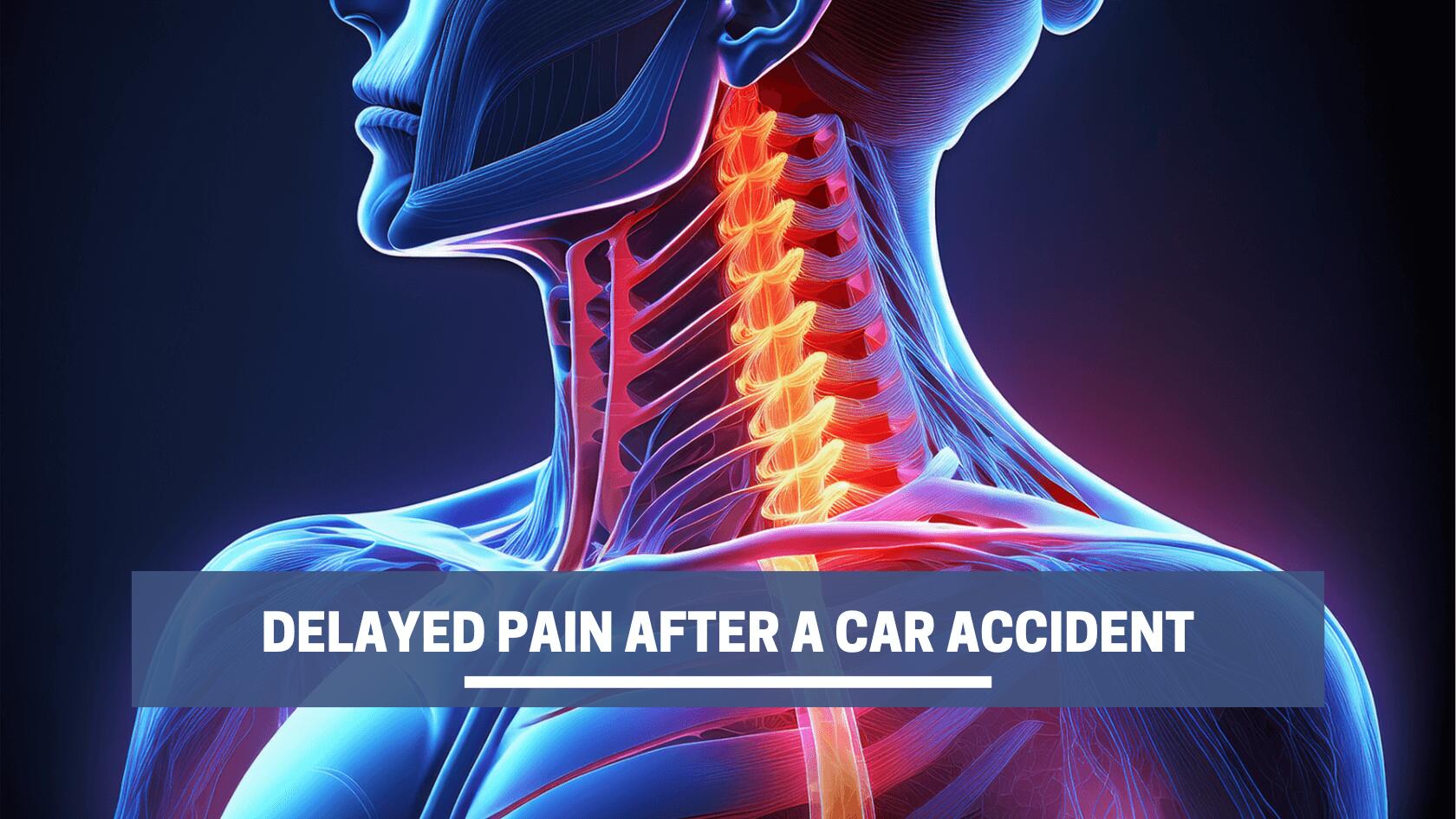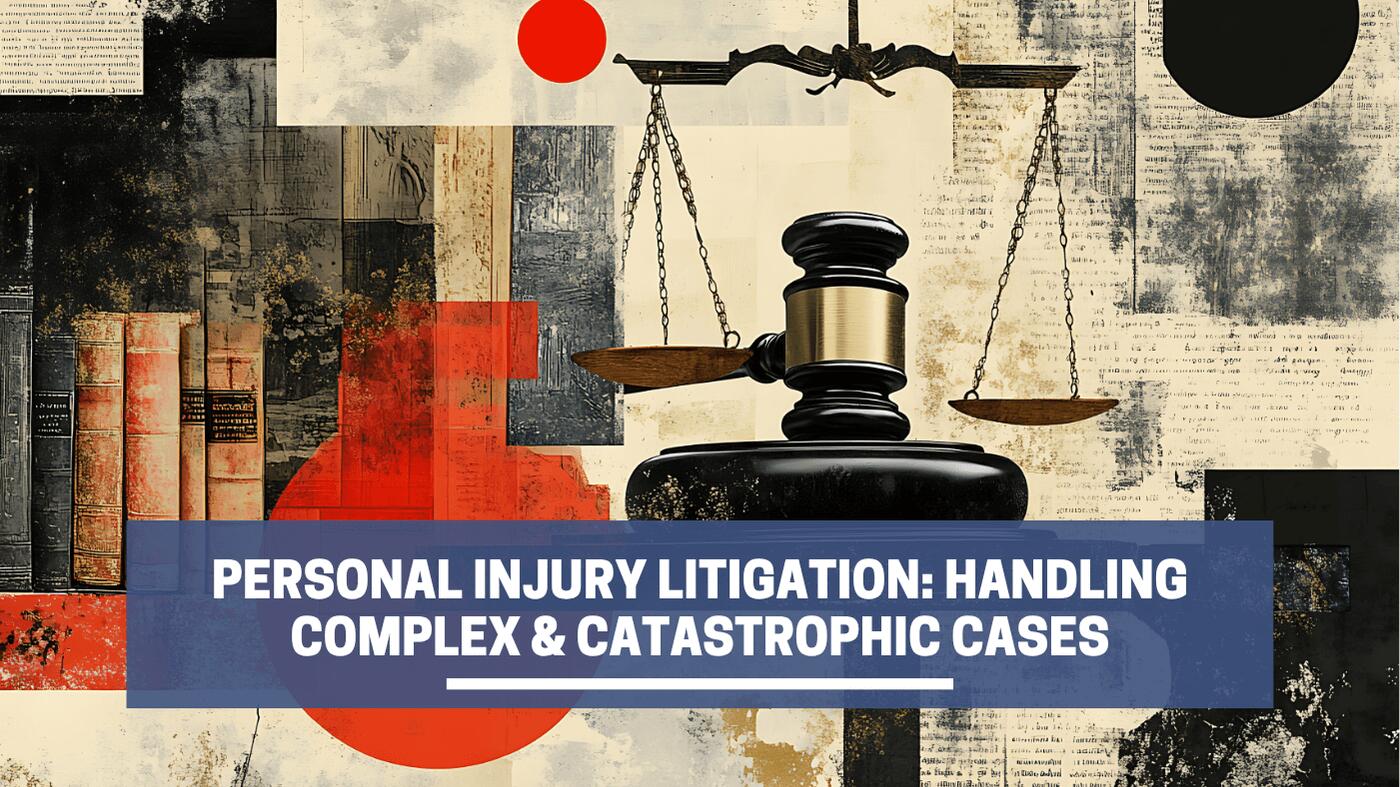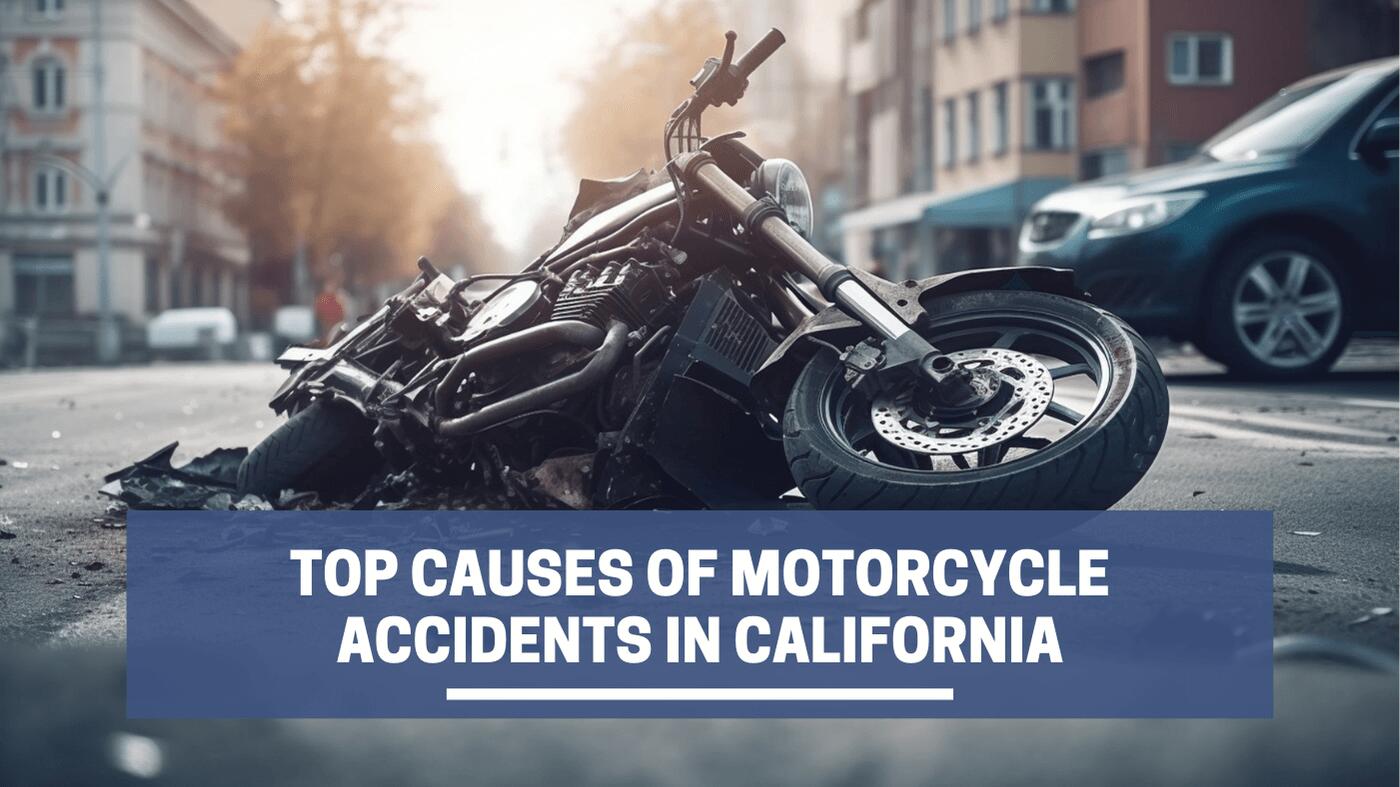Estás conduciendo por Ventura Boulevard en Los Ángeles cuando otro auto choca con el tuyo. Sacudido pero pensando que estás bien, intercambias información y te diriges a casa. A la mañana siguiente, te despiertas dolor, con un dolor de cabeza y un cuello rígido, y te das cuenta de que el accidente te afectó más de lo que pensabas.
Es fácil asumir que está bien si puede salir airoso de un accidente automovilístico sin sufrir lesiones evidentes. Pero en muchos casos, los daños más graves no aparecen inmediatamente después del accidente. Tu cuerpo puede estar en shock, La adrenalina puede enmascarar el dolor., y la inflamación a menudo tarda horas, o incluso días, en aparecer.
Cuando el dolor persiste, puede hacerte sentir ansioso y abrumado, especialmente si no vio a un médico de inmediato. Comprender cómo funcionan los síntomas de lesiones retardadas por accidentes automovilísticos y qué hacer al respecto puede proteger su salud y su derecho a una compensación por facturas médicas, salarios perdidos, y otros daños.
Lesiones comunes con síntomas tardíos en un accidente automovilístico
No todas las lesiones aparecen inmediatamente después de un accidente. como hinchazon, irritación nerviosa, o se desarrolla daño muscular, Los síntomas pueden no aparecer hasta más tarde.. Por eso es importante saber qué buscar en los días posteriores a una colisión..
Las lesiones retardadas comunes incluyen:
| Lesión | Hora de inicio | Síntomas a tener en cuenta |
| Latigazo | 12 a 48 horas | El dolor retardado por latigazo cervical incluye rigidez del cuello, dolores de cabeza, fatiga, o dolor de hombro |
| Conmoción cerebral / Lesión cerebral traumática (TBI) | Inmediatamente o días o semanas después | Problemas de memoria, El tipo de lesión que sufre y su nivel de gravedad afectan la cantidad de compensación que recibe, irritabilidad, y la sensibilidad a la luz son todos síntomas retardados de una conmoción cerebral. |
| Lesiones de la espalda | Varias horas a unos pocos días. | Los síntomas retardados del dolor de espalda pueden incluir dolor irradiado., entumecimiento, o rigidez en la parte baja de la espalda. |
| Lesiones de tejidos blandos | 24 a 48 horas | Los síntomas tardíos de la lesión de tejidos blandos incluyen hinchazón, dolor, moretones, o pérdida del rango de movimiento. |
| Sangrado Interno | Dentro horas a unos pocos días | El daño interno puede provocar dolor abdominal., hinchazón, El tipo de lesión que sufre y su nivel de gravedad afectan la cantidad de compensación que recibe, o hematomas profundos. |
| Trauma psicológico | Varía, a menudo hasta seis meses | Ansiedad, cambios de humor, problemas para dormir, o flashbacks pueden indicar daño mental. |
Si estuvo involucrado en una colisión y siente un dolor persistente, movilidad limitada, o fatiga inusual, Visite a un médico lo antes posible para diagnosticar y documentar la lesión..
Por qué la atención médica es tan importante
El hecho de que salgas de un accidente sin sentir dolor no significa que estés libre de lesiones. Por eso es tan importante recibir atención médica de inmediato:
Los daños ocultos pueden poner en peligro la vida
Es posible que afecciones como hemorragia interna o daño a órganos no causen síntomas visibles, pero pueden volverse fatal si se ignora. Un examen oportuno permite a los médicos solicitar imágenes, realizar análisis de sangre, y comenzar el tratamiento antes de que la condición empeore.
Algunas lesiones requieren evaluación clínica
Trauma interno, daño de los tejidos blandos, y las conmociones cerebrales pueden tardar en desarrollarse por completo. Un médico puede utilizar controles neurológicos., imágenes como tomografías computarizadas o resonancias magnéticas, o rango de movimiento pruebas para diagnosticar lesiones tempranamente y prevenir complicaciones como el dolor crónico, pérdida de movilidad, o daño permanente.
La atención temprana construye una línea de tiempo médica
El tratamiento oportuno crea un historial médico que vincula sus síntomas con el accidente. Esta documentación es más difícil de establecer si esperas, especialmente si surgen nuevos síntomas o los existentes empeoran.
Las primeras visitas guían el proceso de recuperación
La atención inicial ayuda a establecer una base para el tratamiento, que podría incluir fisioterapia, el manejo del dolor, o seguimiento con un especialista. También muestra el alcance de sus lesiones y cómo progresa su recuperación..
Esperar demasiado para tratar el dolor retrasado después de un accidente automovilístico puede causar problemas de salud graves y dificultar la recuperación financiera..
Cómo los síntomas posteriores a un accidente pueden afectar su caso legal
El dolor de aparición tardía tras un accidente puede generar dudas sobre la causa y la gravedad de sus lesiones. Sin documentación inmediata, Las aseguradoras pueden utilizar retrasos para debilitar su reclamo..
Las aseguradoras pueden intentar:
- Disputa cuando ocurrió la lesión.. Si tu dolor surgió más tarde, pueden argumentar que el accidente no fue la causa. Esto crea dudas en su reclamo y hace que sea más difícil conectar la lesión con el accidente..
- Socavar la gravedad de su lesión. Esperar para buscar tratamiento puede hacer que el daño parezca menos grave. Las aseguradoras suelen utilizar esto para argumentar que usted no necesita el nivel de atención médica o apoyo financiero que solicita..
- Limitar los daños por costos médicos.. Una brecha entre el accidente y su atención puede llevar a las aseguradoras a argumentar que parte de su tratamiento no era necesario. Eso puede reducir lo que pagan por facturas médicas o terapias. lesiones de alto costo, como daño espinal o una lesión cerebral traumática.
- Impugnación de daños para impacto futuro. Probar daños a largo plazo es difícil sin un registro que muestre cómo se desarrollaron sus síntomas.. Esa falta de evidencia puede reducir el apoyo a temas como la movilidad reducida., dolor duradero, o atención médica futura.
Tomando las medidas adecuadas después de una colisión puede afectar su recuperación y el resultado de su reclamo.
Qué hacer si siente dolor días después de un accidente
Si no consultó a un médico de inmediato y el dolor comenzó a aparecer, aún puede actuar para proteger su reclamo. Tomar estos pasos:
- Visita atención urgente, la sala de emergencias, o programar una cita con el médico lo antes posible.
- Solicite copias de registros y resultados de pruebas para documentar su condición..
- Mantenga un registro de sus síntomas, observando el momento en que aparecen, su intensidad, y como cambian.
- Tome fotografías de cualquier hinchazón visible., moretones, u otros cambios físicos.
Siguiente, hablar con un abogado calificado en lesiones personales. ellos pueden ayudarte:
- Entiende tus derechos, incluso si no te sentiste herido
- Documente sus síntomas de una manera que los conecte con el accidente.
- Rechazar las tácticas de acuerdos injustos
- Ser remitido a especialistas para una evaluación o tratamiento adicional.
Una representación legal experimentada puede ayudarlo a buscar apoyo financiero justo para su recuperación y sus necesidades futuras..
Proteja sus derechos después de un accidente
Los accidentes automovilísticos dejan efectos duraderos que no siempre son visibles de inmediato. Las lesiones ocultas y el dolor persistente pueden afectar la vida diaria, interferir con el trabajo, y crear costos médicos que no esperaba.
Si aparece nuevo dolor o malestar, programe un chequeo para proteger su salud. Realice un seguimiento de sus síntomas y consulte a un abogado para obtener orientación legal.. Actuar rápidamente hace que sea más fácil recuperarse por completo y crear un reclamo sólido para la atención y la compensación que se merece..
Agenda una gratis, consulta confidencial con The Shirvanaian Law Firm para conocer sus derechos y los próximos pasos.
Preguntas frecuentes
¿Cuánto tiempo después de un accidente automovilístico puede aparecer el dolor??
El dolor puede aparecer inmediatamente o tardar horas., dias, o incluso semanas para salir a la superficie. Este retraso es común en lesiones como el latigazo cervical., conmociones cerebrales, y daño a los tejidos blandos.
¿Puede presentar un reclamo si sus lesiones aparecieron días después??
Los síntomas tardíos no le impedirán presentar un reclamo por lesiones personales. sin embargo, Necesitará documentación médica y un abogado que pueda conectar su lesión con el accidente para proteger su reclamo..
¿Por qué no sentí dolor inmediatamente después del accidente??
Tu cuerpo libera adrenalina durante una colisión, que puede enmascarar el dolor durante varias horas. Una vez que desaparece, La inflamación y el dolor de los nervios a menudo se vuelven más notorios.
¿Qué tipos de lesiones muestran síntomas tardíos??
Latigazo, conmociones cerebrales, lesiones de tejidos blandos, discos herniados, y el sangrado interno puede tardar horas o días en aparecer. Trauma psicológico, como ansiedad o PTSD, puede tardar semanas o incluso meses en emerger.
¿Debo consultar a un médico si me siento bien después de un accidente??
Algunas lesiones están ocultas o se desarrollan lentamente.; retrasar la atención puede empeorarlos. Si no puede ver a su médico inmediatamente después de un accidente automovilístico, ir a atención de urgencia o a la sala de emergencias. Los registros médicos oportunos protegen su salud y su derecho a un reclamo si los síntomas aparecen más tarde.











